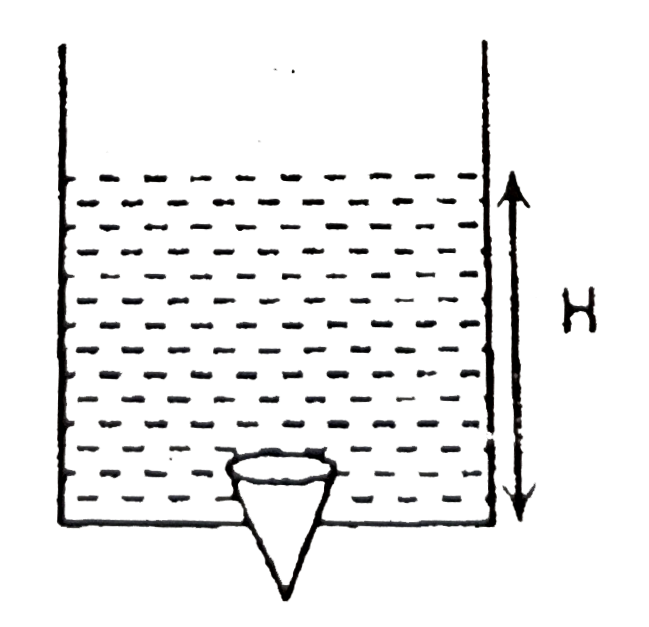An aeroplane weighing 63,000 kg flies up from sea level to a height of 8000 metre. Its engine run with pure normal octane (C8H18) has a 30% of efficiency. Calculate the fuel cost of the flight, if octane sells at Rs 3/- per litre. Given density of octane = 0.705 g mL−1, heat of combustion of octane = 1300 kcal mol−1 (g = 981 cm/sec2 )
The correct Answer is:Rs. 1472.4
Topper's Solved these Questions
- CLASSROOM PROBLEMS 1BOOK - MOTIONCHAPTER - CLASSROOM PROBLEMS 1EXERCISE - THERMODYNAMICS
17 Videos
- CLASSROOM PROBLEMS BOOK - MOTIONCHAPTER - CLASSROOM PROBLEMS EXERCISE - Electrochemistry
22 Videos
- COORDINATION COMPOUNDBOOK - MOTIONCHAPTER - COORDINATION COMPOUNDEXERCISE - EXERCISE-4 LEVEL-II PREVIOUS YEAR JEE ADVANCED
37 Videos
Similar Questions
An aeroplane weighing 63,000kg flies up from sea level to a height of 8000 meter. Its engine run with pure normal octane (C8H18) has a 30% efficiency. Calculate the fuel cost of the flight if octane sells at Rs.3 per litre. Given density of octane =0.705gmL−1, heat of combustion of octane =1300kcalmol−1(g=981m/s2)
View SolutionA tank has a hole of area 2cm2 at its bottom and in this hole a conical cork is placed and water is filled up. The water level is made to fall slowly by means of another orifice in the tank. When the water level come to a height of 'H'cm, the conical cork just comes out from the hole. Given, volume of water displaced by the cork =80cm3, mass of the cork =40gm, Area of hole =2cm2, density of water =1gm/cm3. Area of circular cross-section of conical cork =8cm2, Height of cork submerged in water =1207cm. Take g=10m/s2, π=227 and P0=105N/m2.
Calculate the force exerted by water on the curved surface of the conical cork submerged in water when the liquid level in the vessel is equal to H.

View Solution
Knowledge Check
Assuming that petrol is octane (C8H18) and has a density of 0.8gMl−1, 1,425 litre of petrol on combustion will consume:
A100 mole of phosphineB124 mole of phosphineC150 mole of phosphine acidD175 mole of phosphorus pentaoxideAssuming that petrol is octane (C8H18) and has density 0.8g/ml,1.425litre of petrol on complete combustion will consume
A(a)50 mole of O2B(b)125 mole of O2C(c )100 mole of O2D(d)200 mole of O2
A tank has a hole of area 2cm2 at its bottom and in this hole a conical cork is placed and water is filled up. The water level is made to fall slowly by means of another orifice in the tank. When the water level come to a height of 'H'cm, the conical cork just comes out from the hole. Given, volume of water displaced by the cork =80cm3, mass of the cork =40gm, Area of hole =2cm2, density of water =1gm/cm3. Area of circular cross-section of conical cork =8cm2, Height of cork submerged in water =1207cm. Take g=10m/s2, π=227 and P0=105N/m2.
Calculate the value of H.

View SolutionA tank has a hole of area 2cm2 at its bottom and in this hole a conical cork is placed and water is filled up. The water level is made to fall slowly by means of another orifice in the tank. When the water level come to a height of 'H'cm, the conical cork just comes out from the hole. Given, volume of water displaced by the cork =80cm3, mass of the cork =40gm, Area of hole =2cm2, density of water =1gm/cm3. Area of circular cross-section of conical cork =8cm2, Height of cork submerged in water =1207cm. Take g=10m/s2, π=227 and P0=105N/m2.
The total force exerted by all the fluids on the conical cork in the vertical direction is

View SolutionCalculate the heat produced when 3.785 litre of actane (C8H18) reacts with oxygen to form CO & water vapour at 25∘C. The density of octane is 0.7025 gm/ml. enthalpy of combustion of C8H18 is −1302.7 k Cal/mol.
(ΔH∘fCO2(g)=−94.05 k Cal mol−1,,,ΔH∘fCO(g)=−26.41 k Cal mol−1,),(ΔH∘fH2O(l)=−68.32 k Cal mol−1,,,ΔH∘fH2O(g)=−57.79 k Cal mol−1)
View SolutionCalculate the amount of heat evolved during the complete combustion of 100 ml liquid benzene from the following data :
18 gm of graphite on complete combustion evolve 590 kJ heat
15889 kJ heat required to dissociate all the molecules of 1 liter water into H2 and O2
The heat of formation of liquide benxene is 50kJ/mol
Density of C6H6(l)=0.87gm/ml
View SolutionCarbon monoxide emitted by automobiles is an environmental hazard . A car has an engine of four cylinders with a total cylinder volume of 1600 cc and a fuel consumption fo 7.0 dm3 per 100 Km , when driving at an average speed of 80 km/hr . In one second , each cylinder goes through 25 burn cycles and consumes 0.400g of fuel . The compression ratio, which is the ratio between the smallest and largest volume within the cylinder as the piston moves forward and backward is 1:8.
The gasified fuel and air are compressed to their lowest volume and then ignited .
The overall stoichiometric equation for the combustion reaction is
C8H18=12.102→0.8CO+7.2CO2+9H2O
Calculate the temperature of the
i) gases just at the time of maximum compression and
ii) exhaust gases leaving the cylinder if the final pressure in the cylinder is 200 Kpa.
Relevant data needed for one burn cycle is given below.
compoundΔHf(KJmol−1)CP(Jmol−1K−1)Composition of gases after combustion(mol×10−4)N2(g)0.029.13101.91O2(g)0.029.3610.1CO(g)−110.5329.141.12CO2(g)−395.5137.1110.11H2(g)−241.8233.5812.36Isocotane−187.82
View SolutionGasoline has an enthalpy of combustion 24000 kJ/mol gallon. When gasoline burns in an automobile engine, approximately 30% of the energy released is used to produce mechanical work. The remainder is lost as heat transfer to the engine's cooling system. As a start on estimating how much heat transfer is required, calculate what mass of water could be heated from 25∘C to 75∘C by the combustion of 1.0 gallon of gasoline in an automobile? (Given : C(H2O)=4.18J/g∘C)
View Solution
